#surya temple
Explore tagged Tumblr posts
Text
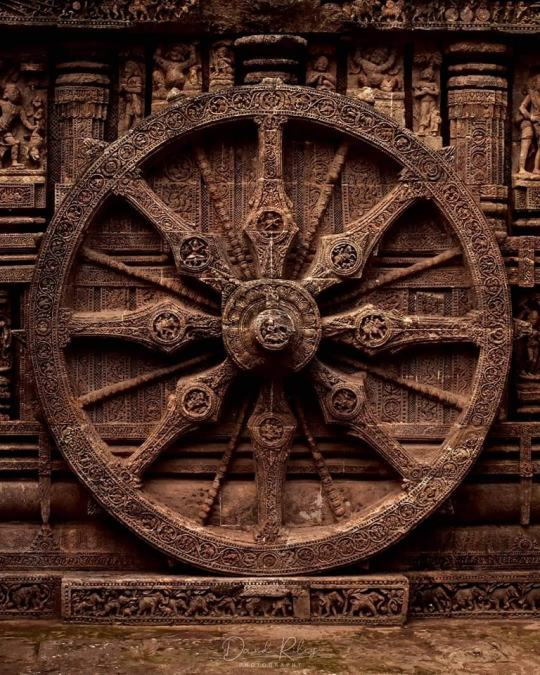
Konark Sundial : Konark Sun Temple, Konark, Odisha. Sun Temple in Konark was built in 1250 CE by Narasimhadeva I of Eastern Ganga dynasty in Kalinga Style of Architecture. This beautiful temple is dedicated to Sun God Surya & is a UNESCO World Heritage Site.
1 note
·
View note
Text
Top Famous Temples in India
The Akshardham Temple, which has 20,000 figurines of Indian spiritual luminaries, nine intricate domes, twenty quadrangle spires, and more than 234 beautifully carved pillars, is one of the main sights in Delhi. The intricately sculpted honey-colored Somnath temple on the western edge of the state is said to be the birthplace of the first of India's twelve holy jyotirlingas. There is a legend that Shiva appeared as a flaming column of light. The Sun Temple is a striking physical monument of the Hindu Kingdom of Orissa during the reign of Narasimha Deva I in the thirteenth century (AD 1238–1264). Its grandeur, elegance, and architecture serve as symbols of the era's dominant moral values as well as the strength and stability of the Ganga Empire. Known for its whole golden dome, the Golden Temple is one of the most sacred Sikh pilgrimage destinations. Situated on a 67-foot square of marble, The Mandir is a two-story edifice consisting of two levels. Maharaja Ranjit Singh used almost four hundred kilograms of gold leaf to build the top part of the palace.
For more Info Please visit our site: Trip Counselors
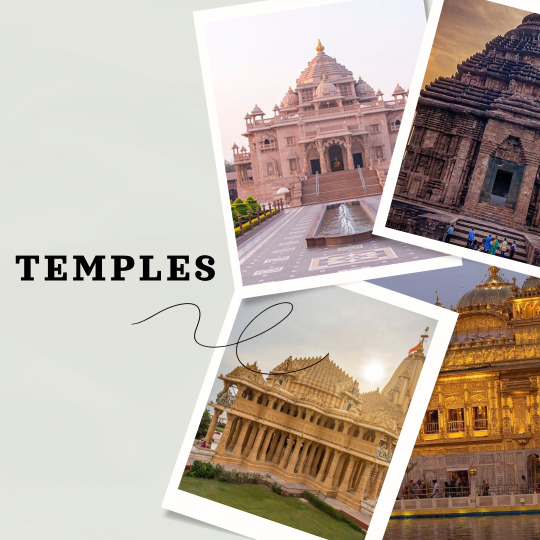
#konarksun temple#sun temple#surya mandir#surya narayana temple#surya temple#information about sun temple#about sun temple#golden temple#darbar sahib golden temple#golden golden temple#golden temple gurdwara#harmandir#harmandir temple#somnath temple#somnath mandir#shree somnath jyotirling temple#jyotirlinga somnath#somnath history#somnath mandir history#akshardham#mandir akshardham#akshardham temple#akshardham mandir location#akshardham mandir#akshar dham mandir#trip counselors#tour planner#itinerary planner#vacation planner#plan my trip
0 notes
Text
Konark Sun Temple, dedicated to Surya, in Odisha state, India.
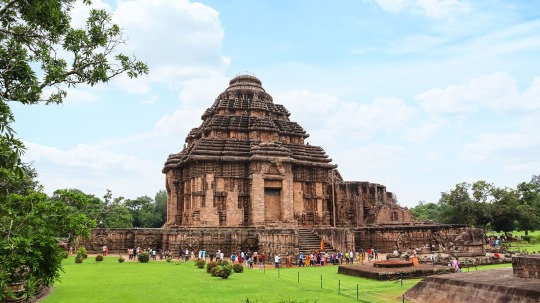
13 notes
·
View notes
Text

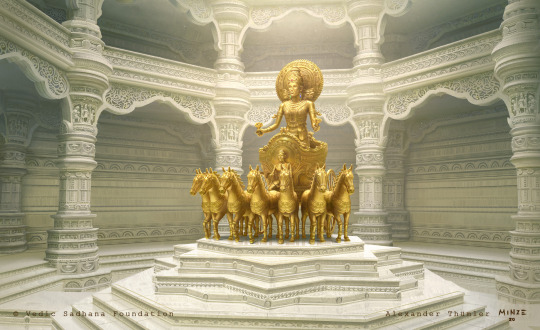
"Amravati Temple Exterior" and "Interior" by Alexander Thümler.
#alexander thümler#minze#atarts#arte#sadhana#surya#vedicism#clouds#statue#temple#architecture#fantasy art#mythology
9 notes
·
View notes
Text
Nirath Sun Temple: North India’s Only Surya Shrine in Himachal
#Bhunda Nirath#Budhi Diwali Himachal#Himachal Sun Temple#Lord Parshuram temples#Nagara architecture Himachal#Nirath Sun Temple#North India&039;s Sun Temple#Rampur Bushahr temple#sacred sites Himachal Pradesh#Satluj Valley temples#Sun God in Himachal#Sun temples of India#Surya Dev temple India#Surya Narayan Temple#temples in Rampur
0 notes
Text
राम सेतु दर्शन से पम्बन ब्रिज उद्घाटन तक: PM मोदी का रामेश्वरम दौरा, जानें हर खास बात!
PM Modi Rameshwaram: प्रधानमंत्री नरेंद्र मोदी ने श्रीलंका से लौटते हुए एक अनोखे और आध्यात्मिक अनुभव को देशवासियों के साथ साझा किया। उन्होंने राम सेतु का हवाई दर्शन किया और इसे एक “दिव्य संयोग” बताया, क्योंकि ठीक उसी समय अयोध्या में रामलला का सूर्य तिलक हो रहा था। इसके बाद, PM मोदी ने रामेश्वरम में भारत के पहले वर्टिकल लिफ्ट समुद्री पुल, पम्बन ब्रिज, का उद्घाटन किया। इस मौके पर उन्होंने 8300…
#Ayodhya Surya Tilak#Narendra Modi spiritual moment#Pamban Bridge inauguration#PM Modi Rameshwaram#ram navami 2025#Ram Setu darshan#Ramanathaswamy temple#Sri Lanka Visit#Tamil Nadu projects#vertical lift sea bridge
0 notes
Text
रहस्यों से भरा है ये 772 साल पुराना मंदिर, श्रीकृष्ण से जुड़े है इसके तार!
#konark#konark sun temple#konark surya mandir#srikrishna#odisha#sunt watch#surya ghadi#mystry of konark sun temple#history of konark sun temple#ganga news
0 notes
Text
Surya Mandir Committee's Registration Safe as Govt Panel Rejects Cancellation
Committee debunks allegations, Surya Mandir leaders celebrate ‘victory for truth’ Jharkhand Government’s investigation committee dismisses Deputy Commissioner’s recommendation to cancel Sun Temple’s registration. JAMSHEDPUR – A three-member investigation committee from the Jharkhand Government has rejected the proposal to cancel the Surya Mandir Committee’s registration, overruling the Deputy…
#जनजीवन#Bhupendra Singh statement#cultural heritage protection#Deputy Commissioner recommendation rejected#false allegations debunked#Jamshedpur East MLA controversy#Jharkhand Government investigation#Life#religious institution vindication#Sun Temple registration upheld#Surya Mandir Committee victory#temple land dispute
0 notes
Text
My Visit to the Beach, and a Poem Shared
Greetings friends One of the key elements of the current temporary hermitage, the current safe-haven by the side of the road, is that it is literally two minutes walk from a very uncrowded and quiet coastal beach. It is a place of golden sands (I know that’s a cliche but in this case I have the evidence!), gentle wave action, and the promise of a possible serenity of a kind I’ve not been close…
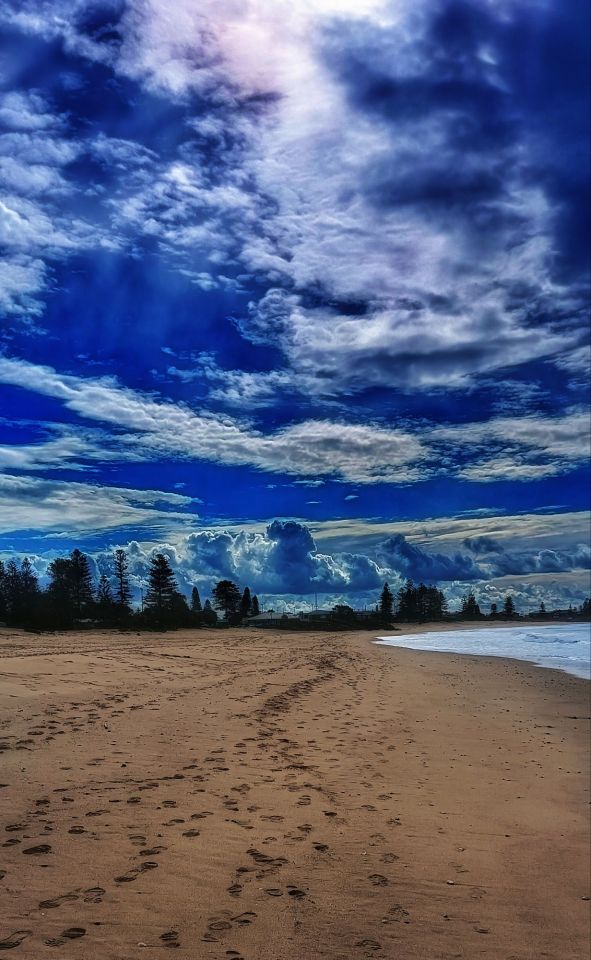
View On WordPress
#&039;spiritual practice#authenticiy#beach#beauty#blogging spirituality#coast#creativity#enlightenment#environment#ganesha#gods#nature gods#ocean#Pacific#poem#poetry#polytheism#sacred site#sacred space#shrine#Spiritual life#spirituality#Surya#temple#The Divine#transience#varuna#wisdom#words of wisdom
0 notes
Text
Konark, Surya Temple (Odisha) Unknown Facts
#suntemple #photography #india #konark #temple #modhera #incredibleindia #gujarat #gujarattourism #architecture #odisha #travelphotography #konarksuntemple #templesofindia #travel #suntemplemodhera #photooftheday #heritage #history #templearchitecture #odishatourism #modherasuntemple #travelgram #travelindia #ancientindia #art #instagood #sun #instagram #puri
Know more about #Hinduism from here: https://bhagavanbhakthi.com/
#konark#konark sun temple#odisha#lord surya#hinduism#krishna#hindu mythology#hare krishna#iskcon#sanatandharma#rama#hindusim#ramayana#hindu#samba#krishna son samba
1 note
·
View note
Text
#Lakshmi Vilas Palace#Sayaji Baug#Baroda Museum#EME Temple#Inorbit Mall Vadodara#Mandvi Gate#BAPS Shri Swaminarayan Mandir#Maharaja Fateh Singh#Sursagar Lake#Surya Narayan Temple#Maharaja Sayajirao University#Culture Festival#Vadodara International Art#VadFest#Navratri festival
0 notes
Text
THE SIGN – CULTURAL REFERENCES, MYTHOLOGY AND META

This post comes on the heels of the one by @respectthepetty about mythology and meta of The Sign, linked here. 😍👍 If you've not read it yet, I recommend you do before watching any more of this series, because it will help things make more sense (especially if you're not familiar with some of the cultural references thrumming in the background).
Anyway, I'd previously done some research on the legend(s) of the Garuda and the Naga in Southeast Asia, and so I'm writing this post to share what I've found because it does have relevance to at least some of what we're seeing onscreen in The Sign, and elaborates on @respectthepetty's post.
The Garuda and the Naga are mythical beings with origins in Indian mythology that have been transposed into cultures across Southeast Asia.

In Hinduism, Garuda is a single deity, depicted in either full-bird form or part-bird and part-human, and is the king of birds and also a divine sun-bird (with physical attributes similar to an eagle's). His elder brother, Aruna, is the chariot driver for Surya the sun-god, while Garuda himself is the mount of Vishnu.
In Buddhist mythology, the garudas (sometimes also spelt garulas) are a society and race of gigantic predatory birds, sometimes also depicted as part-human in form. The garudas are intelligent, social and blessed with might and magical powers.
Thailand may be predominantly Buddhist, but it has also been strongly influenced by ancient Indian culture and Hinduism, and thus both the concept of a single deity Garuda and the race of garudas co-exist in Thai mythological beliefs.
The nagas on the other hand, are snake-like or dragon-like creatures, whose realm is the water world. (The word naga is derived from Sanskrit and is also etymologically related to the English word snake.)
In mythology nagas and garudas are perpetual enemies, although neither side is actually identified with good or evil – they are simply two groups eternally at war with each other (so occidental-leaning minds should dispel any preconception that the water serpents are necessarily the bad guys in The Sign, even though the narrative seems to be tilting in that direction).
When borrowed into popular culture (as has been done for The Sign) you may sometimes see influences of Chinese dragon and phoenix mythology (as Chinese cultural influence is also present in Thailand, and the dragon/phoenix motif of Sinitic culture nicely parallels the naga/garuda conflict pairing). And because of Garuda's association with the sun in Hinduism, and a parallel with the fiery phoenix of Western mythology, you may sometimes see garudas portrayed as aligned with the sun and/or flame as well.
There are some hints of these in The Sign. The naga that Phaya encounters while struggling underwater during the open sea training challenge in Ep.1 is very Thai in appearance (especially with the curved, forward-pointing crest, making it look much like the nagas that adorn Thai temple architecture). But the array of pronged, backward-pointing horns and trailing antennae appear to be a design nod at Chinese or Japanese dragons (East Asian dragons are also strongly identified with the watery realm, by the way). And in the graphics of the series (e.g., in the poster at the start of this post), the sky (the realm of Garuda) is suffused with sunlight and speckled with what look like drifting sparks, referencing sun and flame.
Because of the wings tattooed on his back and his time in the air force, Phaya is most likely the reincarnation of a garuda in human form (and this is why he struggled with the water challenge, as he was completely out of his element).

This is also possibly why we see him smoking early on in the series (because of the alignment of Garuda with the element of fire), and significantly he does this while Naga Tharn (irked by Yai's teasing at the dining table) seeks refuge in the washroom (which is ห้องน้ำ/hong naam in Thai, literally water room):

Billy also describes Phaya's character in the promo video for the series (linked here) as being "like fire, always hot and burning... quite hot-headed." 👍
Elsewhere in the same promo video (linked here), Tharn's good friend Chalothon is explicitly identified as the reincarnation of an important naga, which immediately signals that he and Phaya will be at odds in the series:

The water deity that saves Phaya during the open sea challenge – Wansarat, whom he drew in his sketchbook – is not just Freen Sarocha in a fancy scuba suit. 😂

If you look at her arm and hand when she reaches out to save Phaya (before she turns into Tharn) the green scales meld into the skin of her human wrist – they're part of her natural covering, and she's really a nakhee/nagin/nagini, a female naga, appearing in human form to save Phaya.
The narrative has made it strongly obvious that Phaya is a reincarnated garuda, while Tharn is the reincarnation of Wansarat, from the lineage of the nagas. And the teaser-trailer (linked here) tells us that Phaya and Tharn/Wansarat are lovers bound to each other through time:

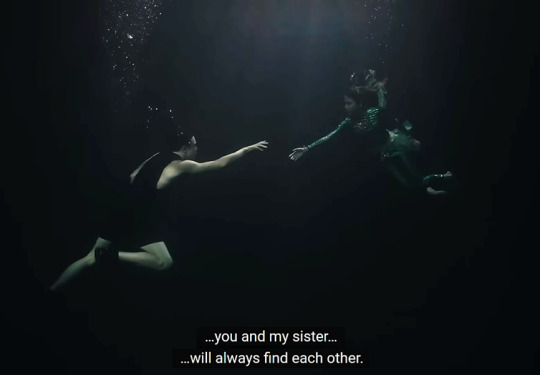
However, the special promo video (released 24 November 2023) also tells us (in Heng's interview linked here) that Chalothon and Wansarat were lovers in past lives, even while it is Phaya and Wansarat (reincarnated as Tharn) who are paired by fate in The Sign.
And as the nagas and garudas are bitter enemies, the love story between Phaya and Tharn/Wansarat that transcends time and reincarnation cycles is also one that must have been (and will continue to be) forbidden by their respective naga and garuda tribes (especially since Tharn/Wansarat also used to be naga Chalothon's lover), and will undoubtedly be a source of conflict in the series. This is way beyond the Montagues and Capulets! 😍
So with this as the base, I took a look at the characters' names, and those belonging to Phaya, Chalothon, Tharn and Wansarat especially also reflect their garuda/naga origins. 🤩
Phaya's name (พญา) means lord, king or leader. While it can be applied to the nagas (พญานาค/phaya naak refers to the King of the Nagas) it is also used for Garuda (the Thai national symbol) – พญาครุฑ/phaya khroot, or Lord Garuda (and is what his name references in The Sign).

(above) Billy Patchanon as Phaya
Chalothon's name (ชโลทร) is rare, but it is derived from Pali/Sanskrit and means river, sea or body of water, reflecting the watery homeland of his naga persona.

(above) Heng Asavarid as Chalothon
Tharn's name (ธาร) also has a connection to his water-dwelling naga roots. Tharn/ธาร is short for ลำธาร/lam thaan and means stream, brook or creek (and he is thus a naga nong to Chalothon's phi).

(above) Babe Tanatat as Tharn/Wansa
However, Tharn is his chue len. His formal name is Wansa, and is the same Wansa in Wansarat (which the narrative lets us know at Ep.1 [3/4] 9.35).
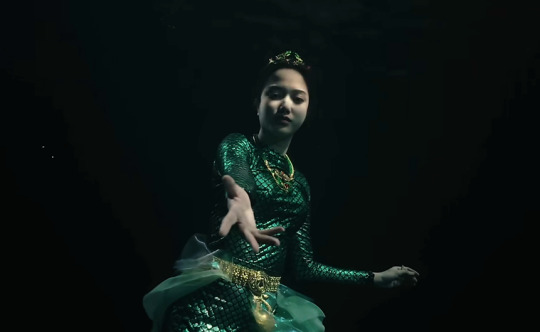
(above) Freen Sarocha as Wansarat
Now Wansarat is spelt วรรณษารัตน์ in the subtitles (at Ep.1 [3/4] 9.02), and I can't find any translation of it that makes sense in the context of The Sign's world-building.
But Wansarat's name is spelt differently elsewhere on the Internet (on Thai drama websites, and movie databases, etc. like thaimovie.org), and I assume they've all based it on official releases from Idol Factory because the spelling is consistent across these other sources – it's วรรษารัตน์ there.
And Wansa/Wansarat spelt this way also reflects the nagas' dominion over water, because วรรษา/wansa (an archaic word, referenced in an older dictionary but not newer ones) means rain or rainy season (from the Sanskrit varsha) – in Thailand the nagas are also associated with rain control, and prayers are offered to them for timely and abundant rainfall when it is needed. (The -rat part of Wansarat is a feminine ending meaning jewel or gemstone, and may echo with meaning for speakers of Indian and Sri Lankan languages, since it's derived from the Pali/Sanskrit ratna).
Just out of interest (because nobody asked 😂) some of these naga/garuda elements were also present in the early episodes of KinnPorsche – the den of the Theerapanyakuls (nagas, wealthy beings of the underworld) was full of watery elements (e.g., the waterfall, the various pools, and Tankhun's carp – which in Chinese belief are the original, natal form of dragons). The -nak in Kinn's formal first name Anakin (which is not a traditional Thai name) is also a nod at the word naga. Porsche had the tattoo of a fiery phoenix on his back, and was out of his element whenever water was concerned (e.g., his failed pool challenge, the mermaid costume punishment, his misadventure with the sprinkler when he tried to smoke in the store room – water vanquishing the flame). Kinn was unable to make fire when they were trapped in the forest, despite claiming to be friends with the flame, while Porsche could immediately do it.
But I didn't see the KinnPorsche narrative taking the naga/garuda themes much further than these random nods in the earlier episodes. Maybe it did (like Kinn and Porsche could be seen acclimatizing to each other's realms more), but I just couldn't be bothered to look at the show more closely since it didn't really stand up to deeper scrutiny, and after the first few episodes I just went along for the exhilaration of the ride instead. 👍
Anyway, I'm totally bedazzled by the level of world-building going on in The Sign and look forward to more from the series. If the first episode is anything to go by, I think Executive Producer Saint Suppapong may be on to something! 😍
#the sign#the sign the series#mythology#naga#garuda#naga and garuda#thai mythology#thai bl#phayatharn
590 notes
·
View notes
Text

“In your light I learn how to love. In your beauty, how to make poems. You dance inside my chest where no-one sees you, but sometimes I do, and that sight becomes this art.” ― Rumi Surya Talon Abraxas Surya as a Source of Energy and Light Surya is revered in Hinduism as a symbol of energy, light, and vitality. In Hindu philosophy, Surya is considered to be the source of all life on earth and is worshipped for his ability to provide warmth, nourishment, and sustenance to all living beings. The sun’s rays are believed to possess healing properties that promote physical well-being and spiritual enlightenment. In Ayurveda, an ancient system of medicine in India, sunlight is considered an essential source of energy that supports overall health and wellness. Furthermore, Surya’s association with light extends beyond physical illumination to spiritual enlightenment. In Hindu scriptures, Surya is often described as dispelling darkness and ignorance with his radiant presence, symbolizing his role in guiding individuals towards truth, knowledge, and inner wisdom. The sun’s daily journey across the sky is seen as a metaphor for life’s journey towards self-realization and spiritual awakening. Overall, Surya’s significance as a source of energy and light underscores his central role in Hindu cosmology and spirituality.
35 notes
·
View notes
Text
Vedic Remedies & healing approach towards energies of planets.
🌙Monday - Ruled by Moon.
🤍Start a day with a spoon of curd.
🤍Meditate for 10 mins.
🤍Sing om Namah Shivaya .
🤍Wear white colored clothes .
🤍 Flow white flowers, white rice into water to balance your mind & get the benefits of moon.
🤍 Feel your feminine side and acknowledge it's beauty & sacredness. Honor your emotional needs , feel , flow & create .
🤍 Love and allow yourself to receive, to be loved in return too.
Tuesday - Ruled by Mars.
🔥Do some workout, exercise, gym , running or yoga .
🔥Wear red colored clothes to energise yourself of this energy.
🔥 Acknowledge your & others wrong doings and let it help you create healthy boundaries for yourself.
🔥 Stand up for the right causes , for your & others well being. Be courageous enough to have faith in yourself.
🔥Cut off unhealthy habits , thought processes & unhealthy relationships. And be brave enough to accept your mistakes too.
🔥Run , shake your body , write an angry letter ( do not send it ) & burn it. Maintain an healthy outlet for your anger . It has it's right & necessary own place. 🌸
🔥Donate red lentils , red flowers into a river or ocean .
☘️Wednesday - Ruled by Mercury.
💚Wear green colored clothes more . Write , read & knit.
💚Do some puzzles .
💚Connect with your sisters and siblings , friends. Laughter & light-heartedness. Sing.
💚Flow green coloured clothes , green dal into a river , ocean.
💚Spend some time with mother nature , greenery.
⚜️Thursday ruled by Jupiter.
💛Pray , connect with your higher self. Read spiritual texts.
💛Be kind to yourself and others.
💛Feel gratitude genuinely for even little things. Meditate , go to a temple or a high spiritual energy place.
💛Wear something new ;). Wear yellow colored clothes or accessories to increase its essence.
💛Respect yourself & everyone.
💛Remember your Guru in your heart.
💛Feel the golden energy totally engulfing you. Feel hope for yourself.
💛Flow yellow colored flowers , yellow dal into rivers , ocean etc.
🕊️Friday ruled by Venus.
🌸Deeply appreciate yourself, your inner heart , inner self , talents , physical appearance. Self care day. Sing , dance , create , paint , feel beautiful.
🌸Meditate, sit in silence, connect with your true self :). Pray to female deities.
🌸Spend quality time with your female friends. Dive into your intuition & feminine spirit.
🌸Wear a flower in your hair . Jasmine fragrance. White or pink clothes.
🌸Accept yourself, acknowledge your light & dark side and forgive yourself.
🌸Lighter & brighter.
🌸Flow white flowers , white colored clothes, ghee etc into an ocean or river to balance it's energy.
Saturday ruled by Saturn 🪐
💙Light a sesame oil diya / lamp 🪔 .
💙Give yourself a sesame oil massage.
💙Keep yourself accountable and be impartial. Follow the right path of karma.
💙 Embody more self discipline in life. Respect people who work below your designations , bosses .
💙Donate to orphanges & old age homes.
💙Have a healthy sense of responsibility towards yourself and others.
💙Believe in higher justice power of the universe.
💙Work hard and learn to be patient with yourself & others.
💙Maintain Persistence , acknowledge your & others hardships and also grow through them so that you get the true gift of maturity.
💙Value time , efforts . Face your fears , accept your shortcomings and smile because you are still valuable & beautiful with it :).
💙Small menial work is no less a job. Respect your servants . Follow your ethics.
💙Be true 🙂
💙Feed food to black dogs.
💙Flow , black dal into a river or ocean.
Sunday ruled by sun.
☀️Give Surya jal to early rising sun.
☀️Acknowledge your divinity & true essence.
☀️Feel gratitude for the energy of sun that gives everyone its light & love.
☀️Create something, laugh & have fun.
☀️Wear red . Feel gratitude for the masculine energies within you.
☀️Spend some quality time with your father or father like figures or our universal father - the sun god.
☀️Perform , theatre acting, center stage singer of your room , innovative and be an authority unto your own self. Choose a Nobel path.
☀️Eat jaggery .
☀️Flow wheat grains ,jaggery into ocean , rivers etc.
PS : whenever you flow these specific items into rivers or oceans , you are balancing off your negative energies.
Thus be grateful and pray to your source of faith or Deity Varun Dev ( god of water & much more ) for his help & love 💕
DM to book a reading with me 🌻
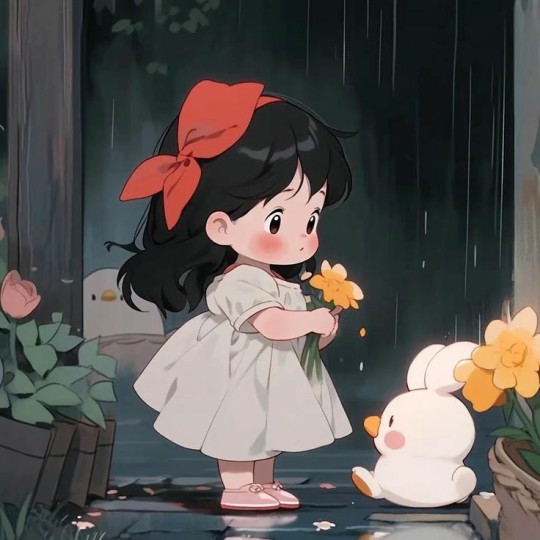
#astro observations#astrology observations#counseling#vedic#astrology#vedic astro notes#vedic astro observations#astro notes#astrology blog#astrologer#healing#vedic remedies
305 notes
·
View notes
Note
Just saw your Singaporean!yuu...I love it as I relate to it but.....Can we have an Indian!yuu
(My oc Akshara is an Indian fem yuu @twistedtalestory )
(such a cute oc)
Grim:
"WHY IS ALL YOUR FOOD SO SPICY?! ARE YOU TRYING TO KILL ME?!"
Immediately regrets stealing their plate of biryani.
"You eat with your hands? Huh… kinda cool, actually."
Crowley:
"Ah, my dear prefect! With your country's rich history and diplomacy, perhaps you can help me manage this school?"
Tries to make them do more work. It doesn’t work.
Crewel:
"Your traditional clothing is so elegant. Sarees? Sherwanis? Aesthetic perfection."
Definitely forces them into a stylish Indo-Western fusion outfit.
Trein:
"A land with thousands of years of history? Finally, someone who understands the importance of the past!"
Wants them to do a lecture on epics like the Ramayana and Mahabharata.
Vargas:
"You do yoga? And wrestling?! Impressive."
Immediately makes them demonstrate Surya Namaskar (Sun Salutation).
Sam:
“Spices? Rare spices?! My friend, you’re sitting on a gold mine!”
Immediately starts importing Indian masalas for his shop.
Heartslabyul
Riddle:
"You have so many rules in your culture, yet you only follow them when you feel like it?! Absurd!"
Shocked by how they respect traditions yet love to bend certain social norms.
Ace:
"Bro, you have like, so many festivals. How do y’all have the energy?"
Immediately attends Holi just to throw colors at Riddle.
Deuce:
“Your weddings last for days?! And have dancing battles?! That’s so cool!”
Accidentally challenges Yuu to a bhangra competition and loses.
Trey:
"Your sweets are made with ghee and milk? That sounds amazing."
Now addicted to gulab jamun and jalebi.
Cater:
"OMG, Bollywood dance moves?! Teach me now!"
*Doesn’t care if it’s classical or item-number style—he’s learning.
Savanaclaw
Leona:
"You have lions in the wild? Hah, good. Shows proper respect for nature."
Kinda impressed by India’s wildlife, but won’t admit it.
Ruggie:
"You eat spiced snacks? I gotta try this."
Learns about pani puri and is hooked.
Jack:
“You run across hot sand during temple rituals? That’s hardcore.”
Respects their endurance and discipline.
Octavinelle
Azul:
"So your country has a spice trade empire? How… lucrative."
Immediately starts a ‘Mostro Masala’ specialty menu.
Jade:
"You have deadly wild mushrooms in your forests? Intriguing."
Wants to compare them to his own fungi collection.
Floyd:
"So you insult people creatively in Hindi? Teach me!"
Now calls people ‘ullu ka pattha’ (son of an owl) just for fun.
Scarabia
Kalim:
"OMG, Diwali! Lights! Sweets! Fireworks! LET’S DO IT!!!"
Would 100% throw the biggest Diwali party NRC has ever seen.
Jamil:
"Your spice tolerance is concerning. Do you even taste food at this point?"
Secretly respects their ability to eat fiery curries without breaking a sweat.
Pomefiore
Vil:
"Your skincare routines are ancient and effective? I need to know more."
Immediately steals their turmeric face mask recipe.
Rook:
"Ah! Kathakali! Bharatanatyam! A country rich in theater and expression!"
Wants to learn their classical dance and storytelling traditions.
Epel:
"Wait… you have actual royal bloodlines in India still? That’s sick!"
Slightly jealous of their deep cultural history.
Ignihyde
Idia:
"You guys basically invented chess?! Respect."
Immediately challenges them to a game.
Ortho:
“India is leading in technology and AI! Your country is amazing!”
Excited to talk about science and innovation with them.
Diasomnia
Malleus:
"Your mythology includes gods destroying entire universes? I like this power level."
Wants to hear all about Shiva, Vishnu, and Durga.
Lilia:
“Indian classical music? A sitar? I must hear it.”
Plays it at full volume just to annoy Sebek.
Silver:
"Wait… you sleep through loud weddings? That’s impressive."
Respects their ability to ignore chaos.
Sebek:
"You respect elders and have strict traditions? Finally, someone who understands discipline!"
Instantly respects them for their cultural values.
RSA & Noble Bell
Neige:
“Your traditional clothing is so colorful and detailed! Can I try a sherwani?!”
Chenya:
“Your folk tales are wild—do you have more like the Panchatantra?”
Rollo:
"Your temples and historical sites are stunning… truly, a country that respects order."
Indian!Yuu Chaos
"NRC food is fine, but where’s the mirchi (chili)?"
"What do you mean you don’t celebrate a festival every week? That’s so sad."
"You call that spicy? Please, that’s baby food."
"This school needs better street food. Where’s the chaat stand?"
"NRC better pray they never anger a ghost—I've seen what happens."
Welcoming Indian!Yuu
First Impressions:
Mexican!Yuu: “You don’t flinch at spice? Finally, someone who understands me.” Brazilian!Yuu: “You like loud music, big celebrations, and good food? You’re gonna fit right in.” Aussie!Yuu: “Mate, I can tell you’ve got a competitive streak. Wanna bet on who can handle the most spice?” Sicilian!Yuu: “Strong family values, strong temper, and a lot of passion? We’re basically cousins.” Romanian!Yuu: “You also have deep, old folklore? Tell me everything.” Jamaican!Yuu: “I feel like you’re one of those people who could outdance everyone at a party.” Southern!Yuu: “Your hospitality is no joke. I feel like if I visit your home, I won’t leave without a feast.” Florida Man!Yuu: “Do you also have that one uncle who does illegal things but never gets caught?” Czech!Yuu: “You have superstition-based rules? I think we’ll have some fascinating talks.” Thai!Yuu: “I can already tell you have strong opinions about food and spice levels. Let’s discuss.” Vietnamese!Yuu: “You talk fast and make sharp comebacks? I like you already.” Pakistani!Yuu: “You understand the struggle of huge families, constant weddings, and nosy aunties. We have to talk.” Egyptian!Yuu: “You have some of the oldest myths and legends in the world. We should trade stories.” French!Yuu: “Your sweets are incredibly complex. I respect that.” Québécois!Yuu: “So, you know how to argue passionately about anything? We’re going to get along great.” Greek!Yuu: “You love mythology and philosophy? We’re gonna be best friends.” Irish!Yuu: “You have a huge drinking culture, but you don’t all drink? Interesting.” Scottish!Yuu: “I feel like you’re a ‘tell it like it is’ person. I respect that.” Italian!Yuu: “Food is serious business to you, huh? Good. I like people with standards.” Aboriginal!Yuu: “You have a culture that’s been around for thousands of years. That’s incredible.” Arab!Yuu: “You’re loud, passionate, and family-oriented? We are basically the same person.” Philippine!Yuu: “Wait, you also have huge extended families and crazy parties? We’re twins.” Myanmar!Yuu: “You also believe in karma and spiritual balance? We’re gonna vibe.” South Georgia!Yuu: “You mean to tell me you got spicier food than Cajun cooking? That’s impressive.” Singaporean!Yuu: “You know the struggle of aunties commenting on your life choices. We are comrades.”
How Indian!Yuu Fits In:
Instantly bonds with Pakistani!Yuu, Egyptian!Yuu, and Greek!Yuu over deep mythology and ancient civilizations.
Becomes besties with Mexican!Yuu, Thai!Yuu, and Vietnamese!Yuu. The spice squad is officially formed.
Brazilian!Yuu and Jamaican!Yuu drag them into every dance battle. Indian!Yuu doesn’t just hold their own—they dominate.
French!Yuu and Italian!Yuu are deeply impressed by their cuisine. “You mix so many spices, yet everything is perfectly balanced?”
Southern!Yuu and Sicilian!Yuu feel like Indian!Yuu’s hospitality is too powerful. “You made how much food just because I said I was a little hungry?!”
Florida Man!Yuu and Aussie!Yuu are dying to get them to break a rule. “You’re so responsible. Come on, just a little chaos?”
Québécois!Yuu, Irish!Yuu, and Scottish!Yuu challenge them to an argument. It lasts hours, and no one wins.
Czech!Yuu, Romanian!Yuu, and Myanmar!Yuu love their folklore and ghost stories. “Wait, your spirits also demand respect or they’ll ruin your life?”
Final Verdict:
Has the strongest spice tolerance. No one else comes close.
Speaks at least three languages. Can curse people out in multiple dialects.
Unintentionally becomes the ‘parent friend.’ Everyone comes to them for food, advice, and occasional emotional support.
Florida Man!Yuu is determined to unlock their chaos. It will take time… but it will happen.
One of the loudest Yuus. Whether they’re laughing, debating, or hyping people up, they bring energy.
Has an auntie network that knows everything. Nobody understands how they gather information so quickly.
#twst x reader#twst#twst wonderland#twst yuu#twst incorrect quotes#twst headcanons#culture!yuu#indian!yuu#indian
33 notes
·
View notes
Text
अयोध्या में रामनवमी का भव्य उत्सव: सूर्य तिलक से आलोकित हुए रामलला, ड्रोन से सरयू जल की बौछार!
Ram Navami Ayodhya: अयोध्या में 6 अप्रैल 2025 को रामनवमी का पर्व ऐतिहासिक और भव्य अंदाज में मनाया गया। राम मंदिर में रामलला की प्रतिमा का सूर्य तिलक हुआ, जिसने हर भक्त के मन को आलोकित कर दिया। देश-विदेश से लाखों श्रद्धालु प्रभु राम के दर्शन के लिए रामनगरी पहुँचे, और इस खास मौके पर ड्रोन से सरयू नदी का पवित्र जल छिड़ककर उनका स्वागत किया गया। यह दूसरा मौका था जब रामलला के नवनिर्मित मंदिर में सूर्य…
#Ayodhya festivities#Ayodhya Ram temple#drone Saryu water#ram janmotsav#Ram Temple live telecast#Ramnavami 2025#Ramnavami celebrations#scientific mechanism Surya Tilak#Shri Ram idol#Surya Tilak Ramlala
0 notes